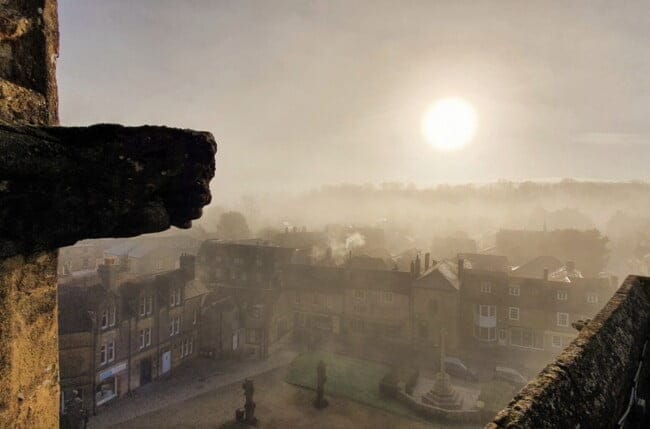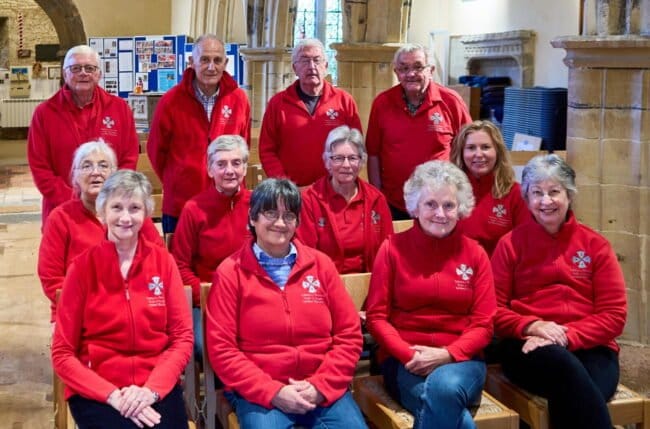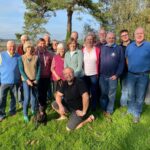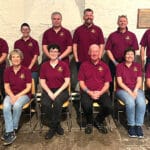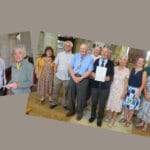The charming village of Kingston, located on Dorset’s Isle of Purbeck, is one of the county’s hidden gems. With its picturesque stone cottages, traditional pub, and the starting point for several stunning walks, Kingston has become a popular tourist destination. While many visitors are drawn to the village for the renowned pub garden, which offers breathtaking views of Corfe Castle, or as a launching point for hikes, few can overlook the impressive Church of St. James, which dominates the skyline like a miniature cathedral. How did such a small village come to possess such a grand church? And what about the bells? Read on to discover more!
The early history of Kingston is somewhat unclear. The Domesday Book of 1086 reveals that even at the time of the conquest, the village was a considerable centre of population, with 40 households listed, placing it among the largest 20% of settlements in the entire country. The survey also notes that the land was held by Shaftesbury Abbey, which became England’s wealthiest nunnery by the time of the Dissolution. Uniquely, it records a church in the village—a rarity, as the survey primarily focused on landowners. This inclusion may indicate Kingston’s early significance.
Going back in time, Purbeck was the site of a national event when Edward, King of England, was assassinated at Corfe Castle in 978. Furthermore, at Bucknowle Farm near Kingston, excavations conducted from 1976 to 1991 revealed the remains of a substantial Roman villa. Thus, there has been continuous human activity and Christian worship in and around the Purbeck Hills for a significant period.
As for churches in Kingston, today’s imposing Victorian structure is at least the fourth to stand in the village. The earliest church mentioned is the one recorded in the Domesday Book, which may have served as a daughter church to the monasteries at either Wareham or Shaftesbury, extending Christianity throughout the Purbeck Hills. By the early 12th century, Kingston became a chapelry of Corfe Castle, and its church, likely rebuilt by this time, functioned as a chapel of ease, located on the eastern side of what is now the Scott Arms. This arrangement remained for over six hundred years.

In 1833, John Scott, 1st Earl of Eldon, demolished the old chapel and rebuilt it at his own expense on the same site, transforming it into the parish church. The new chapel, dedicated to St. James, was designed in the Gothic Revival style by George Stanley Repton, following the original chapel’s layout. In 1873, John Scott III, now the 3rd Earl of Eldon, commissioned George Edmund Street to design a much larger church (the present building) on a new site for use as a private chapel for the Eldon estate. Construction began the following year, and within only six years, the new church was completed at a cost of £70,000. This was a substantial sum for such a small village; according to the National Archives, this amount is equivalent to more than £4.3 million in 2017.
The church served as a private chapel until 1921 when the then Lord Eldon conveyed it to the Church Commissioners, and on October 11 of that year, it was consecrated. In January 1922, the Church Commissioners replaced the original chapel as the parish church, substituting it for Street’s church. The original 1833 chapel then became the church hall for many years until it was sold and converted into a private residence in 1977, where it remains today.

The current church, one of Street’s masterpieces, is an impressive building for such a small village, and few can fail to be awed by its size. Like the rest of the village, it is situated near the top of a chalk escarpment, about 135 meters (440 feet) above sea level. As a result, the church commands breathtaking views from the churchyard, but it is also exposed to the full force of the prevailing winds. Significant renovations were needed in the 1980s to maintain the structure and protect it from erosion and weathering. Street always considered this church his favourite design until the day he died. It measures 33 meters (107 feet) in length and 13 meters (42 feet) in width and is built in the 13th-century Decorated Gothic style, influenced by buildings in Dorset, Normandy, and Switzerland. The crowning feature is its central tower, which reaches nearly 100 feet high. Solid and commanding, this tower is a local landmark; on clear days, it can be seen from miles away. With its height at the roof over 500 feet above sea level, it is the highest (but not tallest) church tower in Dorset, south of Shaftesbury.
So, what about the bells? One might expect that a tower of this size would house a correspondingly large set of bells—and they would be right. Street designed the tower to accommodate a ring of bells from the outset, which is rare in ecclesiastical architecture, where bells are often considered an afterthought. The original set of bells, like the church itself, was commissioned by the 3rd Earl of Eldon and intended to match the scale of the church. John Taylor & Co. of Loughborough was tasked with casting the bells in 1878, resulting in a ring of eight, with a tenor bell weighing 28 and a half hundredweight (1,448 kilograms). The bells were hung in a new oak frame, which still supports them today. On July 24, 1880, eight members of the Ancient Society of College Youths from the City of London were invited by Lord Eldon to attend the consecration of the church and the bells. After the consecration, they attempted the first full peal on the bells. Unfortunately, their attempt failed after approximately 3,500 changes.
The bells remained unchanged until the restoration from 1920 to 1921, when, again at Lord Eldon’s expense, they were completely overhauled by John Taylor & Co. All eight bells were lowered from the tower and sent to the foundry, where both the treble (lightest) and tenor (heaviest) bells were recast using the newly discovered “true-harmonic” tuning. This significantly improved the sound of the ring. The other six bells were retuned, and all eight bells received new fittings, including cast iron headstocks, gudgeons, ball bearings, and clappers. They were then rehung in their original frame. The new tenor bell, which remains in use today, now weighs just under 27 cwt and is tuned to D. It is arguably the finest-toned bell in the county and was cast during the same 12-month period as some of the country’s most acclaimed peals, including those at Inveraray, Skipton, Ditcheat, and Westbury.

In 1983, serious problems were discovered with the bell frame, which had just passed its 100th anniversary of construction, as well as with the massive oak supporting beams and bell fittings. Restoration work began in 1984 and continued until 1989. John Taylor & Co. returned to lift all the bells from their bearings to clean and renovate them, as wear had made the bells difficult to ring. The frame was stabilized with the help of volunteer ringers from Wimborne Minster, who inserted 20 vertical steel tie rods through the structure. Decayed support beams were repaired or replaced, and the clappers were re-bushed.
In the late 1990s, thanks to a donation from Ron Pocklington, a ringer from Swanage, an order was placed to augment the bells to ten by adding two treble bells. To facilitate this, the Swanage ringers further strengthened the original oak frame with additional steel bracing, replaced the ground pulleys for the bell ropes, removed wooden wedges from the frame, and installed new steel foundation beams. Nicholson Engineering of Bridport constructed a new steel upper frame above the oak frame to house one of the new treble bells and one of the existing bells. The new bells were cast and tuned by John Taylor & Co. in 2000 and hung by Nicholson’s. To accommodate the two new bells, the original second bell (now the fourth after the addition) and the new second bell were hung in the new upper frame. The new treble bell and the original treble bell (now the third after the addition) were hung in the original oak frame. This installation created the first—and so far only—ring of ten bells on the Isle of Purbeck and made it the fourth heaviest ring of bells in Dorset, trailing only Sherborne Abbey, Wimborne Minster, and Christchurch Priory.

Since then, the bells have not required any major attention. They are well-regarded by ringers nationwide for the quality of their tone, and the summer months see frequent visits from ringing bands. Ringing at Kingston is always enjoyable; the atmosphere, the sound and motion of the bells, the views, and the history mean that first-time visitors and locals alike nearly always leave happy. Practice nights are held most Fridays from 7 to 9 PM, and visitors are always warmly welcomed.




